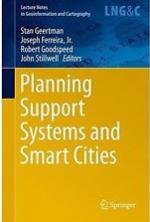Citation:

Abstract:
An agent based (AB) simulation model of urban dynamics following a disaster is presented. Data disaggregation is used to generate ‘synthetic’ data with accurate socio-economic profiling. Entire synthetic populations are extrapolated at the building scale from survey data. This data is coupled with the AB model. The disaggregated baseline population allows for the bottom-up formulation of the behavior of an entire urban system. Agent interactions with each other and with the environment lead to change in residence and workplace, land use and house prices. The case of a hypothetical earthquake in the Jerusalem CBD is presented as an illustrative example. Dynamics are simulated for a period up to 3 years, post-disaster. Outcomes are measured in terms of global resilience measures, effects on residential and non-residential capital stock and population dynamics. The visualization of the complex outputs is illustrated using dynamic web-mapping.

